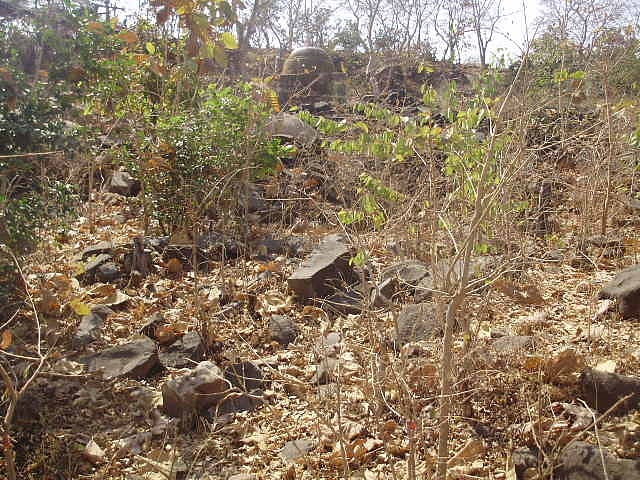Bhopal (Madhya Pradesh): Nearly 105 km away from Bhopal, Dev Badla nestled in the lap of craggy Vindhyachal mountains from where originates Nebaj river may soon emerge as a prominent art centre of Central India. A temple complex dating back to Parmar era has been unearthed at Dev Badla, making it the eighth art centre of Parmar era (9th-14th AD) in the state.
The word Dev Badla originated from Malwa’s local dialect. Dev means God, Badla means hills. Locals call this place - the land of gods. Dev Badla is located in a deeply-forested and hilly area in Jawar tehsil in Sehore district. The nearest village is 3 km away from the site.
So far, remains of 15 temples have been discovered at Dev Badla in excavations that began in 2016 and are likely to continue for at least a decade more, said Ramesh Yadav, director of Dev Badla project and archaeologist at state archaeology department.

Before the unearthing | FP Photo
The temples, constructed in classical Bhumij style, are dedicated to Shiva, Vishnu, Gauri, Laxminarayan, Kartikeya and Durga.
The Parmars were Rajputs who ruled over Malwa plateau for almost 400 years beginning from 9th century AD. Temple complexes built by them have been unearthed in Ashapuri (Raisen district), Gandharva Puri (Dewas), Omkareshwar (Khandwa), Un (Khargone), Hinglajgarh (Mandsaur), Udaipur (Vidisha) and Nemawar (Sehore).
Yadav said temples unearthed in Dev Badla were built in 11th-12th centuries. “The archaeology department began excavations at the site after Sehore district collector wrote to it about remains of temple-like structures in the area,” he said.
So far, clearance of debris and digging has revealed 15 temples. Two have been restored whereas the rest are being conserved. “I am sure as the work progresses, we will find more temples buried in the ground there,” he added. Yadav said Dev Badla would emerge not only as a tourist destination but also a valuable source of information on Parmar-era temple architecture.











